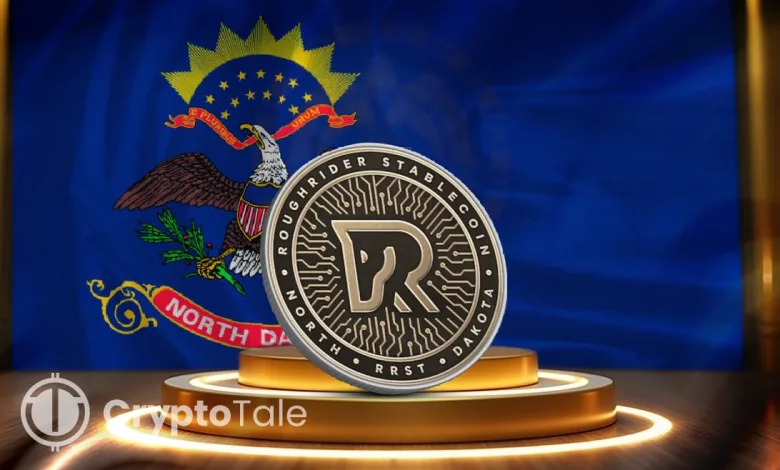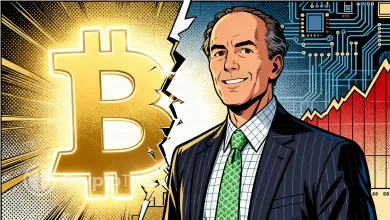North Dakota to Launch Dollar-Backed “Roughrider” Stablecoin

- North Dakota becomes the second U.S. state to launch its own dollar-backed stablecoin.
- Bank of North Dakota partners with Fiserv to debut the “Roughrider Coin” for state banks.
- The new stablecoin aims to streamline interbank lending and modernize financial operations.
The state of North Dakota will become the second state in the USA to launch its own stablecoin, following Wyoming’s lead in pioneering state-backed digital currency. The Bank of North Dakota (BND), the country’s only state-owned bank, announced that it will launch “Roughrider Coin” next year through a partnership with financial technology company Fiserv Inc.
New Chapter in State-Backed Digital Currency
The Roughrider Coin is intended to be a fully dollar-backed stablecoin, created to facilitate interbank transactions within North Dakota. In addition, its initial use cases will encompass enabling fund transfers between regional banks and credit unions for purposes such as loan disbursements, overnight lending, and construction financing.
According to Don Morgan, Chief Executive Officer of the Bank of North Dakota, the initiative reflects the institution’s long-standing commitment to financial innovation. “We’re leveraging our 106-year history to stand up and be a leader in the banking and fintech space for North Dakota,” Morgan said. “We see this affecting the industry and continuing to affect the industry, and so we’re getting involved.”
The project positions North Dakota as an early adopter in the growing field of digital finance. Governor Kelly Armstrong stated that issuing a state-backed token “supported by real money” demonstrates North Dakota’s leadership in building a secure and efficient financial ecosystem for its citizens.
Partnership with Fiserv and the Role of Technology
Furthermore, Fiserv, a global financial technology solutions provider, will support the Roughrider Coin with its newly launched FIUSD digital assets platform. The system integrates technology from Paxos Trust Co. and Circle Internet Group Inc., both established players in the stablecoin infrastructure market.
Fiserv Chief Operating Officer Takis Georgakopoulos stated that the platform is designed to facilitate faster and more efficient payments. “We’re entering a new era where payments are instant, interoperable, and borderless,” he said. He added that North Dakota’s leadership could encourage other states to explore similar models as the regulatory environment grows increasingly favorable toward digital assets.
Initially, the Roughrider Coin will be restricted to institutional use within North Dakota’s financial system. However, the Bank of North Dakota has not ruled out expanding its functionality in the future. Morgan noted that the bank may later consider stablecoin-based deposit accounts or other retail services once regulatory standards mature.
A Competitive and Rapidly Evolving Stablecoin Market
The state’s move follows Wyoming’s August launch of the Frontier Stable Token (FRNT), making North Dakota the second state to enter this digital frontier. The U.S. stablecoin market has surged since the passage of federal stablecoin legislation in July, which established a regulatory framework for issuers.
Private firms, such as Stripe, PayPal, Visa, and Mastercard, have also expanded into digital asset services, signaling broader adoption across the financial sector. Industry observers suggest that state-issued stablecoins could complement these corporate initiatives by offering more transparent and regulated alternatives.
Despite increased optimism, Georgakopolous admitted that widespread adoption is not without its problems. Key issues include creating strong consumer protections similar to those used in traditional card payment systems.
Related: Stablecoins May Drain $1 Trillion from Emerging Banks by 2028
Historical Connection and Economic Context
Founded in 1919, the Bank of North Dakota has assets exceeding $10 billion and works with local banks to support agriculture, commerce, and industry. By returning profits to state programs, BND aims to ensure that technology innovations, such as the Roughrider Coin, promote local economic growth without financial instability.
In addition, the Roughrider Coin is named after Theodore Roosevelt, the former U.S. President, whose Rough Riders regiment became famous during the Spanish-American War. Roosevelt spent some of his early years in North Dakota, and his experiences there shaped his conservation efforts, which contributed to the state earning the nickname “Rough Rider State.”





